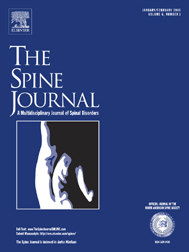
SPINE
PRP use in posterolateral lumbar fusion leads to increased rate of CT-assessed union after 2 years
Spine J. 2019 Feb;19(2):e34-e40. doi: 10.1016/j.spinee.2017.07.16762 patients scheduled for one- or two-level posterolateral lumbar fusion were randomized to a local bone autograft with or without the addition of platelet-rich plasma. Patients were assessed for bone fusion on CT, as well as clinical outcome on visual analog scales for back pain, leg pain, and leg numbness. Follow-up was scheduled for the first 2 years after surgery. For bone fusion, union rate and time to union significantly favoured the PRP group compared to the control group. Nonetheless, no significant differences between groups were observed in VAS back pain, VAS leg pain, or VAS leg numbness scores at any time point.
Unlock the full ACE Report
You have access to {0} free articles per month.Click below to unlock and view this {1}
Unlock NowCritical appraisals of the latest, high-impact randomized controlled trials and systematic reviews in orthopaedics
Access to OrthoEvidence podcast content, including collaborations with the Journal of Bone and Joint Surgery, interviews with internationally recognized surgeons, and roundtable discussions on orthopaedic news and topics
Subscription to The Pulse, a twice-weekly evidence-based newsletter designed to help you make better clinical decisions
Exclusive access to original content articles, including in-house systematic reviews, and articles on health research methods and hot orthopaedic topics
Or upgrade today and gain access to all OrthoEvidence content for just $1.99 per week.
Already have an account? Log in


Subscribe to "The Pulse"
Evidence-Based Orthopaedics direct to your inbox.
{0} of {1} free articles
Become an OrthoEvidence Premium Member. Expand your perspective with high-quality evidence.
Upgrade Now












































































